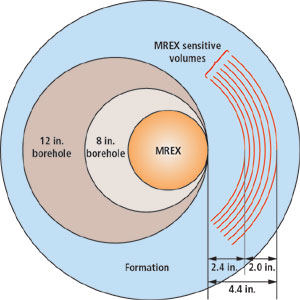Drilling advances
Learning from experience. Sixty one station keeping incidents from 2002 are analyzed in the latest Annual DP (Dynamic Positioning) Incident Report published by the International Marine Contractors Association (IMCA), London. Two of the incidents had been the subject of IMCA safety flashes. In one case, starting an additional thruster triggered a failure of two other online thrusters. Poor design and failure to close out failure and effects analysis modes were identified as secondary causes of the incident. Reliability of dynamically positioned vessels is at the heart of IMCA's work and embraces all facets: design, equipment, procedures, trials, training, crewing, competence and behavior, all of which contribute a heady mix to the continually growing DP industry. IMCA brings some recognized structure to it all. Work has now started on the report for 2003. All reports are reviewed with the submitting company prior to publication. Copies of the DP Incident Report (IMCA M 173) are available for a moderate charge from IMCA: publications@imca-int.com. A full list of all IMCA publications appears on www.imca-int.com. In other IMCA news, the association is presently developing a syllabus covering high voltage training for the offshore industry. The Training, Certification & Personnel Competence (TCPC) core committee agreed that a format would be developed comprising a high-level basic course structure. The level of training would be identified for all appropriate personnel on a vessel. Then, depending on their day-to-day work requirements, there would be further elements developed to cover specific requirements. Aging work force: A problem? The US Congress' House Resources Subcommittee on Energy and Minerals Resources is investigating the potential problem. The subcommittee chairman initiated a hearing entitled, “The aging of the energy and minerals workforce: A crisis in the making?” which focused on a perceived workforce shortage in the energy and mineral industries. “The situation we are facing today is essentially the same one we faced in 1999,” said Apache's Ted Hess. “While we do not believe that this shortage of skilled personnel is reducing our ability to fulfill our obligations to find and produce oil and gas, we are concerned that this problem will become more acute in the years to come.” To this, Bank of America's Jim Wicklund added, “The rest of the world has placed a great deal of importance and focus on capturing part of this value chain, while in the US, there has been a continuing decline in the number of people studying earth sciences and entering the industry. The high technology, high-value-added end of the industry that operates in the global market is the next sector that could be lost.” As a result of this potential decline, and combined with the hydrocarbon reserve potential in other parts of the world, the US faces a very real threat of losing a globally dominant, high technology and critical industry representation. Many believe industry must work closely with the oilfield degree-granting institutions to attract more talented students to the industry. Hess urged Congress and the Administration to provide a policy environment in which energy markets are less volatile and serious issues are addressed. Petroleum engineers are generally well compensated. Entry level salaries for college graduates with PE degrees are among the highest of any engineering field. But working against these high salaries is a damaging trend: more than one million employees have been shed by the largest 25 oil companies since 1982, in a wave of consolidations that could now leave the industry critically short of skilled professionals. The inability to attract young talent contributed to a pronounced “graying of the energy workforce” from the entry level to senior executives. For example 75% of the members of the Society of Petroleum Engineers are age 40 or older. As if 40 sounds “old” anymore. World record subsea wells. Shell Exploration & Production Co. reports that on June 23rd, it began producing gas from its Coulomb development, comprising the two deepest wells in the world in terms of water depth. The wells are located in Mississippi Canyon Blocks 657 and 613 in the deepwater Gulf of Mexico, and are tied back via a 27-mile flowline to the BP-Shell Na Kika Floating Development System in Mississippi Canyon 474. The two wells were completed in successive, world-record depths. On May 2nd, C-2 became the world's deepest completion in 7,565 ft of water. But, within 17 days, C-3 was completed in 7,570-ft water. Deepwater discoveries correction. In this column in July, we quoted MMS on a list of eight 2004 deepwater discoveries announced through June 1. The list incorrectly reported the operator and owner of Goldfinger (Mississippi Canyon 771). Goldfinger is operated by Dominion Exploration and owned by Dominion E&P, 75%, and Pioneer Natural Resources, 15%. Article correction. In the May issue, page 57, in the article “Advances in MWD and formation evaluation for 2004,” by David Patrick Murphy, the wrong figure was inadvertently presented as Fig. 2. The correct figure is shown here. And the first half of the paragraph related to this figure, with a minor correction, should read as follows. MR Explorer (MREX) is Baker Atlas' new multifrequency, multiple magnetic-field-gradient, side-looking, wireline NMR tool, Fig. 2. Multiple frequencies allow single-logging-pass acquisition of multiple echo trains with different acquisition parameters, providing a more complete data set.5
|
|||||||||||
- Applying ultra-deep LWD resistivity technology successfully in a SAGD operation (May 2019)
- Adoption of wireless intelligent completions advances (May 2019)
- Majors double down as takeaway crunch eases (April 2019)
- What’s new in well logging and formation evaluation (April 2019)
- Qualification of a 20,000-psi subsea BOP: A collaborative approach (February 2019)
- ConocoPhillips’ Greg Leveille sees rapid trajectory of technical advancement continuing (February 2019)





